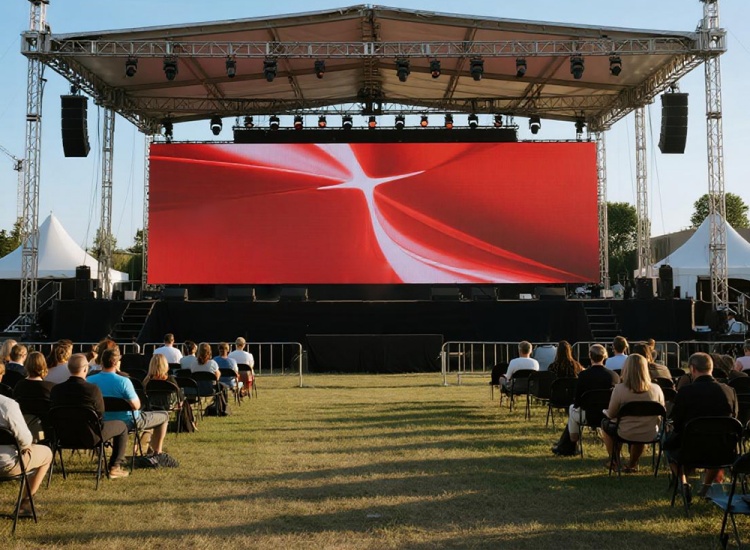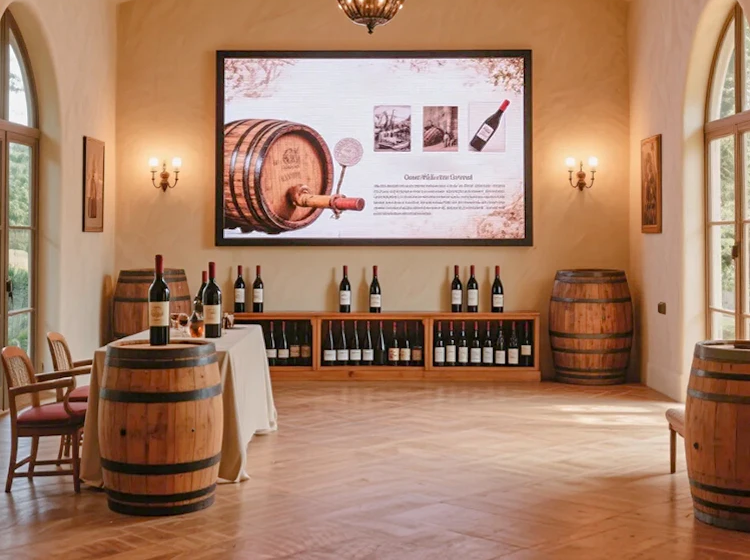Prolonged exposure to high temperatures can cause irreversible damage to the LED lamp beads and components of LED displays. For LED lamp beads, this can lead to brightness decay, wavelength shift, and lamp beads failure. For components, it can cause damage to the driver IC, PCB board deformation and detachment, mask aging, and power supply failure. Therefore, how should we address and resolve the direct and indirect damage caused by high temperatures to LED display panel?

I. Material Selection
- For LED lamp beads, we should choose high-quality, low-power LED lamp beads. For example, Nationstar Kinglight LED lamp beads, because these brands have very high light energy conversion efficiency, which effectively reduces the heat generated.
- Choose a high-quality driver IC. The driver IC directly affects the refresh rate, which in turn affects the display effect. A high-quality driver IC, with its ultra-high conversion efficiency and precise constant current control, can significantly reduce the heat generated by itself and the LED chips from the source.
- Select high-quality materials for the cabinet. Use die-cast aluminum and profiled aluminum, which have high thermal conductivity. Die-cast aluminum and profiled aluminum have excellent heat dissipation properties, effectively transferring the heat generated by the LED display screen during operation, thus achieving effective heat dissipation.

II. LED Display Panel Heat dissipation
- Increasing the heat dissipation area is crucial. Large LED displays generate a significant amount of heat. Therefore, stable operation under high summer temperatures hinges on effective heat dissipation. Firstly, materials like die-cast aluminum and profiled aluminum are essential. Secondly, thicker and more robust heat dissipation fins in the LED display panel design maximize the contact area with air, effectively reducing heat loss.
- Provide ventilation channels. Ensure that the heat generated by the LED screen can be effectively circulated while preventing water from entering. For example, design the location and size of ventilation openings appropriately to utilize natural wind to remove heat.
- Fan Design. Prolonged exposure to sunlight, especially in summer, necessitates the installation of active cooling fans to effectively protect the LED screen. This involves installing axial fans at the back of the LED display cabinet to forcefully extract heat generated within the cabinet, creating strong convection. For example, the outdoor iron cabinet LED display (Ningshine HC series) features powerful cooling fans on both sides, resulting in excellent heat dissipation.
- Install air conditioning. For large outdoor LED screens, where the screen area is large, installing air conditioning effectively dissipates heat. Furthermore, air conditioning can more precisely control the internal temperature of the LED display within a reasonable range, ensuring stable operation of the display in a suitable working environment.

III. LED Display Panel Routine Maintenance
- Heat dissipation maintenance. Regularly check the cooling fan and heat sink to ensure they are working properly; replace any faulty components immediately. During hot summer months, appropriately lower the display screen brightness. This effectively reduces power consumption and heat generation without affecting display quality.
- Power supply check. Monitor the temperature of the power cord and check for damage or aging, replacing it if necessary.
- Regular cleaning. Dust accumulation on LED displays directly affects heat dissipation; if dust builds up, it may block heat dissipation channels. Therefore, dust should be cleaned regularly from the back of the modules, fans, and vents using a soft brush or specialized cleaning tools. Direct spraying of water is strictly prohibited.
IV. LED Display Panel Summary
High temperatures pose a significant challenge to the stable operation of LED displays, but we have taken various measures to address these challenges. By selecting appropriate materials to control heat generation at its source, implementing scientific heat dissipation, and conducting routine maintenance, we can effectively address these issues. This ensures that LED displays continue to operate efficiently and stably in high-temperature environments. Ningshine’s LED displays, with their strong environmental adaptability, not only cope with high temperatures but also maintain stable operation in harsh environments.
